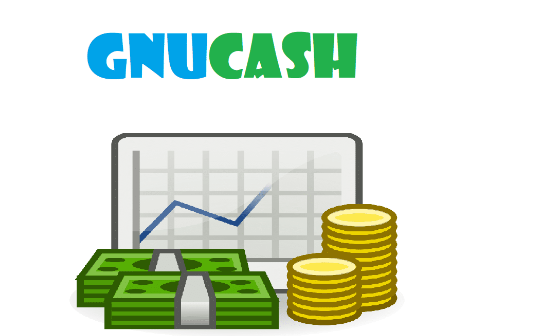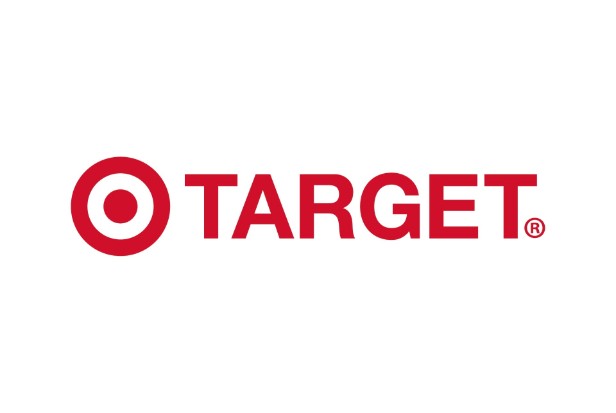
n this article we’ll show you how to enter expenses in GnuCash, and describe how it functions, how to use it, and more.
Quick Answer
Locate the account you want to add an expense to, then click on it.
- To enter an expense in GnuCash, go to the “Accounts” window and select the account to that you want to add the expense to
- In the “Transaction” column, click on the “+” button
- A new window will open where you can enter the details of your transaction
- In the “Description” field, enter a brief description of the expense
- In the “Amount” field, enter the amount of money you spent on this expense
- If you have any additional comments or notes about this expense, you can enter them in the “Notes” field
- When you are finished, click on the “OK” button to save your changes and close the window
You can download and install GnuCash, a free small-business accounting software program, right onto your computer. Windows and iOS computers can both use it. Since it is an open-source platform, anyone can create or modify the software’s code.
For very small businesses or freelancers who don’t mind doing manual data entry, prefer a desktop solution, and have sufficient coding knowledge to benefit from the platform’s customizability, GnuCash might be a good fit. For those seeking a more automated solution, a free cloud-based accounting product like Wave is more appropriate.
You are aware of how critical it is to maintain a record of your expenditures if you use Gnucash to manage your finances. You can better manage your finances and keep an eye on your spending by learning how to enter expenses in Gnucash. Here is a quick tutorial on how to enter expenses in Gnucash.
The Home screen is the first thing you’ll see when you launch Gnucash. There is an Accounts column in the left-hand column of the screen. A list of all the various account types that Gnucash can track can be found underneath Accounts.
Table of Contents
How Do I Enter Transactions in Gnucash?
Assuming you would like a step-by-step guide on how to enter transactions in GnuCash:
- The account you want to add the transaction to is selected when GnuCash is opened. We’ll use the Assets: Current Assets: Checking Account example in this example.
- Select the Transactions tab from the window’s right-side menu. The current month will be displayed by default, but you can change this using the drop-down menu above where it says “Show transactions for:” Simply choose that month or year from the drop-down menu if you need to add a transaction from a prior month or year.
- To enter a new transaction, click on the + icon at the top of the Transactions tab (it’s directly above where it says “Date”).
Your transaction will be further described in a new window that appears. - In the first field, labeled “Date”, enter when this particular transaction took place using MM/DD/YYYY format (or, if it has been modified, whatever format is selected under Edit->Preferences->General).
- Fill in the Description and Notes fields with any pertinent details about this specific transaction that will aid in future memory (e.g., “Coffee with John” or “Dinner out with the family”).
Despite not being necessary, these fields may be useful.” Category” will likely be auto-filled based on past transactions; however, feel free to change it if needed.” Amount” should also be filled in – this is likely going to be a negative number since most people spend money rather than earn it!
Simply click on Split… below Amount and enter the necessary information if you need to divide a sum of money among several categories (which is typical when dealing with things like restaurants).” To:” should remain unchecked unless you are transferring money between accounts within GnuCash; if not, leave it empty.” Reconciliation Status” allows you to keep track of whether or not you have reconciled this particular transaction with your bank statement yet; checking Off Budget simply means that this item isn’t in the budget (again, unless you’re moving money between accounts).
“Action” can usually just be left as New,” but feel free to experiment with different options here.”Accounts Receivable Payment”, “Invoice Payment”, etc.
How Does GnuCash Work?
Transactions
Users of GnuCash enter transactions in a register that resembles a checkbook. GnuCash requires users to manually balance transactions by entering dollar amounts in the debit and credit columns of the register, unlike most accounting software that enters debits and credits for you in the background.
Additionally, a tool for reconciling entered transactions with bank statements is provided. However, the user interface of this feature isn’t as slick as that of cloud-based products like QuickBooks Online or Xero, which instead come with online bank feeds that automatically import transactions from your accounts.
Users can also set up recurring transactions with predetermined amounts and a specified timeline; after doing so, they can plan payment reminders.
Graphs and Reporting
Financial data is displayed by GnuCash as a bar graph, pie chart, or scatter plot. Profit and loss statements, balance sheets, portfolio valuations, cash flow statements, and other reports are included in its suite of reports.
Mobile App
Users of GnuCash’s mobile apps for Android and iPhone can enter transactions anywhere and then manually import them into the desktop application.
How to Use Gnucash
Financial management for both individuals and small businesses can be done with the help of GnuCash, a potent accounting program that is open-source, free, and powerful. Although using GnuCash to manage your finances might initially seem difficult, this tutorial will guide you through the fundamentals. When you launch GnuCash after installing it, the Welcome window will appear.
You have the option of creating a new file or opening an already existing one here. We will make a new file for this tutorial. Give your file a name and click “OK”.
You are currently viewing GnuCash’s main window. The left pane is called the “Account Tree” and shows all of your accounts in a hierarchical fashion. The right pane is called the “Register” and shows transactions for the currently selected account.
Assets, Liabilities, Equity, Income, and Expenses are just a few of the predefined accounts that are included by default with GnuCash. You can add more accounts by right-clicking on an existing account and selecting “New Account” from the menu. Double-clicking the account in which the transaction occurred in the Account Tree pane will add the transaction.
This will launch the account’s Register, where you can enter all pertinent information about the transaction, such as the date, the transaction’s description, the amount of any deposits or withdrawals, etc. Once you have entered all pertinent information about the transaction, simply click “Record” to save it. That’s it!
You’ve just successfully added your first transaction to GnuCash!
Gnucash Expense Account
If you’re like most people, managing your finances can be a little difficult. Gnucash, however, makes it simple to keep track of your spending and ensure that your money is being used prudently. For use with the Windows, macOS, and Linux operating systems, Gnucash is a free and open-source accounting program.
It has all of the features you would anticipate from a top-notch accounting program, including the capacity to monitor your earnings and outgoings, make budgets, produce reports, and more. Gnucash’s expense account feature, however, is among its best features. You can easily keep track of every expense with the help of this feature.
It is simple to see where your money is going each month and to spot any areas where you might be overspending as a result. To set up an expense account in Gnucash, simply go to the Accounts menu and select “New Account.” Then choose “Expense” as the account type.
Then, you’ll be able to input all of your expenses into this account, which will be set up according to category (such as food, travel, housing, etc.).). Budgets for yourself or your family can be created using the expense account feature. By doing so, you can make sure that you aren’t spending more on unnecessary items than you can afford.
And you can easily change your budget if you do discover that you are overspending in one area. Manage your finances more easily than ever with Gnucash’s expense account feature!
Gnucash New User Tutorial
If you’re like most people, it’s intimidating to consider maintaining your own financial records. However, it is not necessary with Gnucash! From creating your account to keeping track of your transactions and managing your finances, this in-depth tutorial will guide you through everything you need to know to get started using Gnucash.
For individuals and small businesses, Gnucash accounting software is free and open source. It has all the features you need to manage your finances and is simple to use. A computer with an internet connection is all you need to get started.
Gnucash can be downloaded from their website or (if you’re using Ubuntu) installed directly from the Ubuntu Software Center. Launch Gnucash from the Applications or Dash menu once it has been installed. Gnucash will ask you whether you want to create a new file or open an existing one when you first launch it.
If this is your first time using Gnucash, select “Create A New File”. After that, you will be prompted to enter some of your personal data, including your name and address. Once you’ve entered this information, click “OK” to continue.
You’ll need to set up your accounts on the following screen. You can add all the various accounts, including your checking, savings, credit card, and other accounts, that you want to monitor in Gnucash here. To add an account, simply click on the “Add” button and enter the relevant information.
Once you’ve added all your accounts, click “OK” to continue. How often should Gnucash reconcile your accounts? is the question that appears on the following screen. Reconciling means comparing the transactions on your bank statements and those in Gnucash.
This promotes the accuracy and helps guard against errors. The majority of users should be fine with monthly reconciliation, but if you find that you need to change it, simply go to Edit->Preferences->Reconciliation. After choosing how often to reconcile, click “OK” and then “Finish” on the next screen. You should now be able to see Gnucash’s main window, which has four sections. It looks something like this: 1) The Accounts Tree: This displays a list of all the accounts you’ve created in Gnucash along with their balances. You can use this area to quickly switch between different accounts.
Pricing
An accounting software option available for free is GnuCash. GnuCash is free to download, set up, and use as long as you have access to a computer. To update and maintain the software, though, you might require expert help depending on your level of technical expertise. If that is the case, hiring professional assistance will be expensive.
Pros
- Cost-effectiveness: Free accounting software can’t be beaten, but GnuCash’s manual system isn’t as user-friendly as some other free accounting software alternatives.
- GnuCash is simple to use, with its primary features centered on fundamental accounting concepts. The majority of its capabilities are concentrated on recording transactions, reconciliation, and general financial management, though it does include features for invoicing, customer tracking, and budgeting. Small-business owners who only require these fundamental features and who are well-versed in accounting won’t be overrun by extra bells and whistles.
Cons
- Not cloud-based: GnuCash is a locally installed piece of software, which restricts a company owner’s access to their financial information. Online-based solutions are gaining popularity due to the fact that they are frequently more flexible and user-friendly, although there are still business owners who prefer a desktop-based approach. Additionally, they can be used on a variety of devices wherever they are.
- Limited functionality and out-of-date: Many accounting software rivals support multiple users, advanced reporting, receipt scanning, online payments, third-party integrations, and more. GnuCash, in contrast, has a single-user limit and is more difficult to integrate with external tools.
- GnuCash does not provide live customer service; instead, it only provides online self-service tools for users who require assistance. You can access comprehensive Wiki pages, tutorials, and other resources through the GnuCash website. Is Gnucash Good for Personal Finance? The best personal finance software for each person will vary depending on their particular financial situation and needs, so there is no universally applicable answer to this question. However, we can say that GnuCash is a good option for personal finance software because it is brimming with features to support users in effectively managing their money. GnuCash has tools for reconciling accounts, creating budgets, setting up bill reminders, tracking income and expenses, and more.
Additionally, it provides connectivity for online banking, support for multiple currencies, and tracking for investment accounts. Additionally, it is free to use! GnuCash is definitely something to think about if you’re looking for personal finance software to help you better manage your finances.Is Gnucash Good for Business? Whether or not GnuCash is beneficial for businesses is a complex question with no easy solution. The answer depends on a variety of elements, including the particular requirements and objectives of your company. However, GnuCash can generally be a useful tool for startups and small businesses.
Open-source bookkeeping, accounting, and invoicing software are available under the name GnuCash. Utilizing GnuCash has a number of advantages, one of which is its simplicity of setup and use. GnuCash may also be altered to meet the particular requirements of your company.
For instance, you can add plugins or extensions to track inventory levels or make unique reports. Utilizing GnuCash has the added benefit of being cost-free to download and use. Businesses with limited resources or those that are just getting started may find this useful.
A sizable user base exists as well, and they are all eager to assist you with any queries or issues you may encounter. The fact that GnuCash does not provide as many features as some other paid options, like QuickBooks or Xero, is a drawback. GnuCash can still be a good option for your business accounting needs, though, if you are just starting out or have a small budget. How is Gnucash Used in Business? All sizes of businesses can use the robust open-source accounting program GnuCash. It offers a variety of features and can be tailored to meet the particular requirements of your company. GnuCash is the perfect accounting solution for small companies and startups because it is simple to use and has an intuitive interface. Gnucash Double Entry AccountingIf you’re like most people, the phrase “double entry accounting” probably doesn’t mean much to you. However, it’s critical to understand the fundamentals of this crucial accounting technique if you’re in business or considering starting one. A debit and a credit are required to be recorded for each financial transaction in order to ensure double-entry accounting.
In other words, for every dollar that comes into your business, another dollar must go out. Although it might seem like common sense, this is a very effective tool for managing your finances and making sure your books are balanced. There are several benefits to using double-entry accounting:
1. It offers an audit trail. You can go back and look up the money’s origin and destination if something doesn’t add up. If you have several employees handling money, this is especially helpful.
2. Errors are less likely as a result. An error is less likely to go undetected if every transaction has two entries. 3. You are compelled to carefully consider each transaction as a result.
Every transaction requires consideration of both sides, which increases your chance of spotting errors early on. 4 Both personal and business finances can benefit from double-entry accounting. Despite the fact that it’s most frequently used by businesses, there’s no reason why individuals couldn’t gain from it as well!
Conclusion
You might be unsure of how to enter expenses if you use Gnucash to manage your finances. Thankfully, it’s not too difficult to accomplish. Here is a quick tutorial on how to enter expenses in Gnucash.
Find the account that you want to add the expense to in Gnucash by opening it first. Then, click on the “Transactions” tab and select “New Expense.” By doing so, a new window will open, allowing you to enter all the necessary details about the expense.
Include the date, payee, amount, and any other pertinent information. If you’d like, you can classify the expense as well. When you’re finished, simply click “OK” and the expense will be added to your account.


